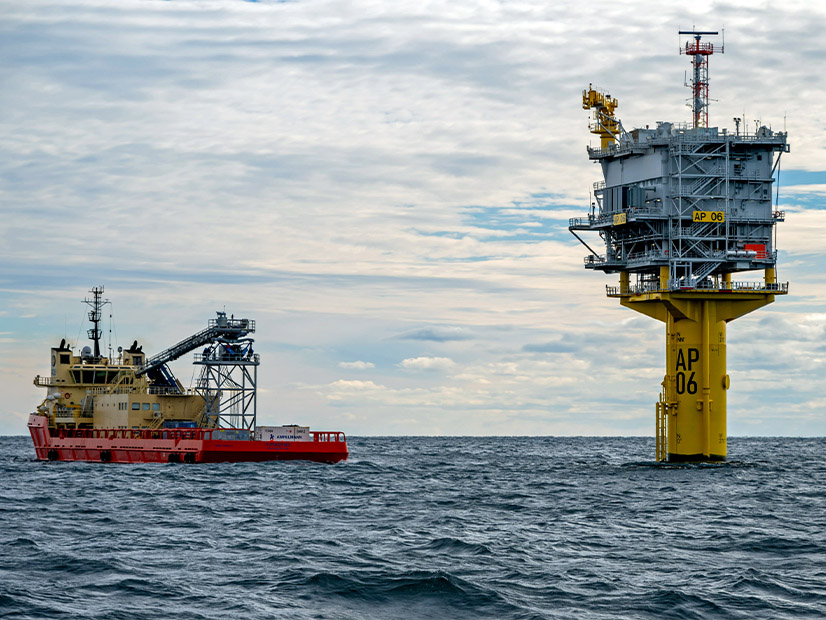Eversource will take a fourth-quarter 2023 impairment of up to $1.6 billion due to the ongoing struggles of its offshore wind joint ventures with Ørsted.
Eversource will take a fourth-quarter 2023 impairment of up to $1.6 billion due to the ongoing struggles of its offshore wind joint ventures with Ørsted.
New England’s largest utility disclosed the news Jan. 8 in an 8-K filing with the SEC.
Also Jan. 8, Eversource said it is continuing its long-running effort to exit offshore wind development altogether and is in advanced negotiations with the selected buyer. It described the unnamed potential buyer as “a leading global private infrastructure investor,” but offered no insight on the likelihood of negotiations succeeding.
Eversource and Ørsted have two joint ventures: one for South Fork Wind, one for Revolution Wind and Sunrise Wind. Separately, Eversource holds a tax equity investment in South Fork.
South Fork is under construction and recently became the first utility-scale offshore wind project to send power to the U.S. grid. The partners also have committed to building Revolution.
But they have said they cannot build Sunrise under the terms of their contract with New York state. New York in November allowed them, and other renewables developers struggling with financial pressures, to cancel their contracts and rebid.
Ørsted and Eversource are considering whether to submit a new bid for Sunrise, and if so, how much that new bid should ask for, and what chances of success that bid might have. Based on this, Eversource expects to record an after-tax, other-than-temporary impairment of $600 million to $700 million for Sunrise.
Meanwhile, in the fourth quarter, both joint ventures revised their projections to reflect the higher cost of building the three wind farms and, as a result, substantially reduced their fair value. Consequently, Eversource expects to record an after-tax, other-than-temporary impairment of $800 million to $900 million for the three projects.
Previously, Eversource reported a second-quarter 2023 impairment of $400 million ($331 million after taxes) and Ørsted reported more than $4 billion in impairments in the first three quarters of 2023, both due to offshore wind.
The U.S. offshore wind industry has been struggling for more than a year now, as developers who locked in the value of their projects’ electricity saw the cost of building those projects soar amid high interest rates, spiking inflation and supply chain shortages.
In late 2023, Ørsted’s Ocean Wind 1 and 2 became the first contracted offshore wind project in the United States to be canceled. Three others canceled power purchase agreements and went into limbo in 2023, and a fourth followed early this year.
In a news release Jan. 8, Eversource CEO Joe Nolan cited those pressures: “Offshore wind projects continue to experience major supply chain disruption and inflationary challenges in the early stage of this growing industry in the U.S., and this impairment is an unfortunate reflection of the current market conditions we are facing. Eversource remains focused on advancing the efforts to decarbonize the energy sector and accelerate electrification with much-needed investments in transmission and other clean energy infrastructure through our regulated utilities.”
In its 8-K filing Jan. 8, Eversource offered one positive update: It is now very confident that construction of an onshore substation will qualify for a 10% investment tax credit adder that was factored into the sale price negotiated with the potential buyer. That is worth nearly $400 million.



